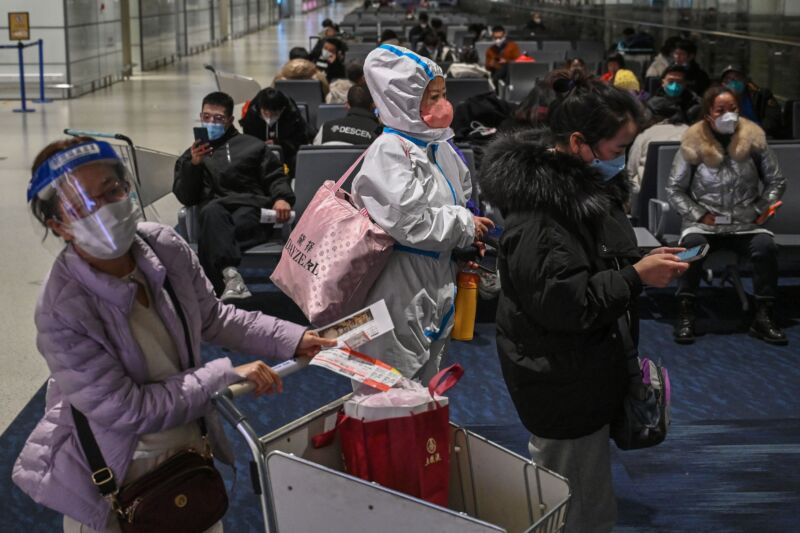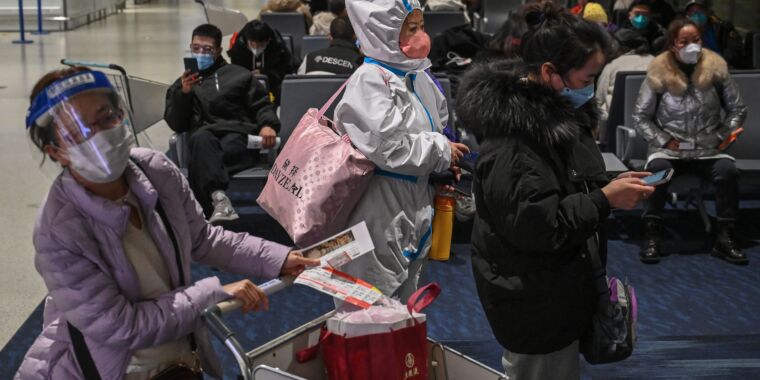
While China has largely given up on reporting COVID-19 cases, evidence of the massive wave of infection at airports outside its borders is readily appearing.
On a Dec. 26 flight from the southeastern city of Wenzhou to Milan, Italy, 42 percent of the 149 passengers on board tested positive for COVID-19 upon arrival, according to a study published Thursday in the journal Eurosurveillance.
The Italian researchers behind the study also looked at the test positivity rates of three other flights from eastern cities in China to Italy in late December, two to Milan and two to Rome. Collectively, 23 percent of the passengers on the four flights (126 of the 556 passengers) tested positive for SARS-CoV-2. The other three flights had positivity rates of 19 percent, 11 percent and 14 percent.
The passengers were tested with rapid antigen tests or PCR tests. Positive antigen tests were confirmed by PCR testing. The tests most likely caught people with mild or asymptomatic cases, as well as those who had recently recovered. PCR tests can remain positive for weeks after an infection.
Similar to the Italian data, The Washington Post reported about a week ago that it had seen data from the Korea Disease Control and Prevention Agency showing that 23 percent of China’s short-term visitors to Korea (314 of the 1,352 tested at the airport) were positive for SARS-CoV-2 between January 2 and January 6.
The numbers betray a massive infection in China, which is expected but not well documented. When China abruptly scrapped its zero-COVID policy last month, it dropped mass testing and largely stopped reporting cases. Meanwhile, the virus is ripping through a population that, as the Italian researchers note, is “a highly vaccinated but infection-naive population.”
Current models estimate that there could be 1.5 million new infections in China every day and more than 1 million could die in the coming weeks. Health experts are particularly concerned about the spread of disease during the upcoming Lunar New Year on Jan. 22, when tens of millions of people travel across China to see family for the festivities. The move is expected to shift high transmission from major cities to more vulnerable rural areas.
Benjamin Cowling, an epidemiologist at the University of Hong Kong, told The Washington Post that infection rates so far are “fully consistent with predictions that the majority of the population of major cities are already infected.”
One piece of good news is that the Italian researchers sequenced the entire genome of the virus from 61 passengers and found no new or alarming variants. The sampling yielded Omicron sublines BA.5.2, BF.7 and BQ.1.1, which have been seen elsewhere. The data is consistent with what has been reported elsewhere and from China.

